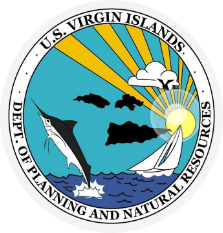Science Saturday’s 8th Anniversary Edition Ӏ Coral Conservation 101: Reef Restoration Through Education
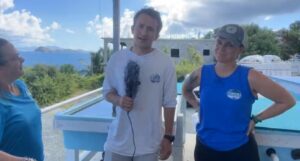 An essential part of our ecosystem: corals! Since 2019, the team at Coral World Ocean and Reef Initiative (CWORI) has been dedicated to various efforts such as marine conservation initiatives, animal rehabilitation, marine debris collection, and coral restoration. Climate change has led to warmer water temperatures causing significant bleaching incidents that have distressed coral reefs across our territorial waters in unprecedented ways. As a nonprofit based in the USVI, CWORI’s mission is “to conserve marine habitats and wildlife through rescue, rehabilitation, restoration, and research and to empower others through public education”. One key focus of CWORI’s work is coral restoration which is crucial for preserving the diversity of species and the longevity of coral reefs.
An essential part of our ecosystem: corals! Since 2019, the team at Coral World Ocean and Reef Initiative (CWORI) has been dedicated to various efforts such as marine conservation initiatives, animal rehabilitation, marine debris collection, and coral restoration. Climate change has led to warmer water temperatures causing significant bleaching incidents that have distressed coral reefs across our territorial waters in unprecedented ways. As a nonprofit based in the USVI, CWORI’s mission is “to conserve marine habitats and wildlife through rescue, rehabilitation, restoration, and research and to empower others through public education”. One key focus of CWORI’s work is coral restoration which is crucial for preserving the diversity of species and the longevity of coral reefs.
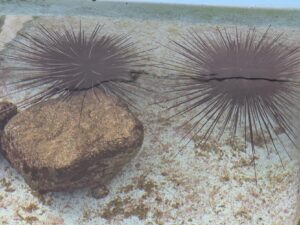
During March’s Science Saturday, Territorial Parks and Protected Areas Director Kitty Edwards and Special Projects Coordinator Chantelle Quiñones visited Coki Point on St. Thomas to meet with CWORI’s scientists and technicians. Andrew McGregor, Conservation Manager, and Kelsey Worth, Education and Outreach Coordinator, were waiting at the outdoor coral reef lab known as “The Pad”.
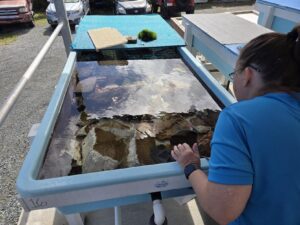
Andrew explained that there are four stages in coral restoration, starting with the collection process. Wild coral colonies are retrieved from various sites surrounding St. Thomas and St. John. The goal is to preserve the colony on the reef as much as possible while bringing fragments of coral back to the “The Pad” for propagation. Because corals are living organisms, the team is careful not to damage them during any part of the restoration process.
Andrew and Kelsey walked through the methodology involved in coral fragmentation. This process involves using a bandsaw with a diamond-plated blade to cut the coral. After being cut, the fragments are placed on coral plugs to keep the polyps secured in a stable position. These fragments are then placed in one of sixteen open flow-through raceways at “The Pad”. Careful monitoring of the corals’ growth leads to their eventual out-planting in the waters that surround Coki Point and other nearby areas.
Who is responsible for returning the propagated corals to the ocean during the out-planting process and what happens after that? Watch the full interview with Kitty, Andrew, and Kelsey to learn more!
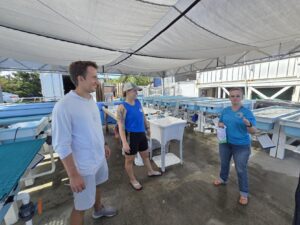
Science Saturday, a monthly Facebook LIVE event, airs on the second Saturday of each month at 10 a.m. To discover more about the fascinating science behind Coral conservation and restoration visit Coral World Ocean and Reef Initiative and watch the full interview on Department of Planning and Natural Resources.
